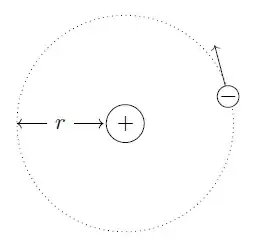It is from my homework question (my question is not about the answer of the question),
In the hydrogen atom $H$, an electron and a proton attract each other with the electric force and form a bounded system. The motion of the charges in the $H$-atom is quite similar to the satellite motion we have seen in the gravitational problem. Both forces obey the inverse-square law ($\text{Force}\; \alpha\; 1/r^2$). As a result, Kepler's laws also apply to the $H$-atom. Since proton is much heavier than the electron, it can be approximated to be at rest at its location and the electron is rotating around it. Consider a circular motion with radius r.
Question: Derive the expression for the period $T$ of the motion as a function of $r$. Is the Kepler's Law of periods valid? Derive an expression for the orbital speed $v$ as a function of $r$. How does the speed scale?
My question:
Since there is only one electron in the orbit, how I can verify if Kepler's law is valid or not?
